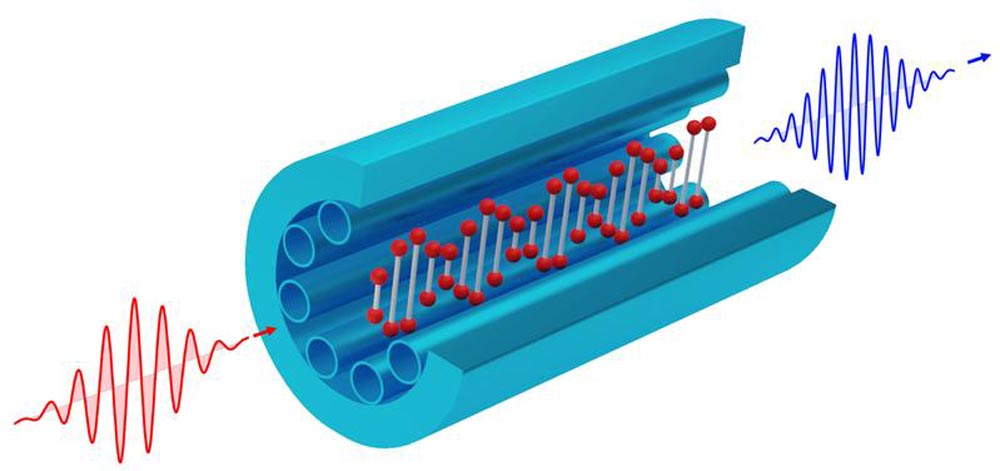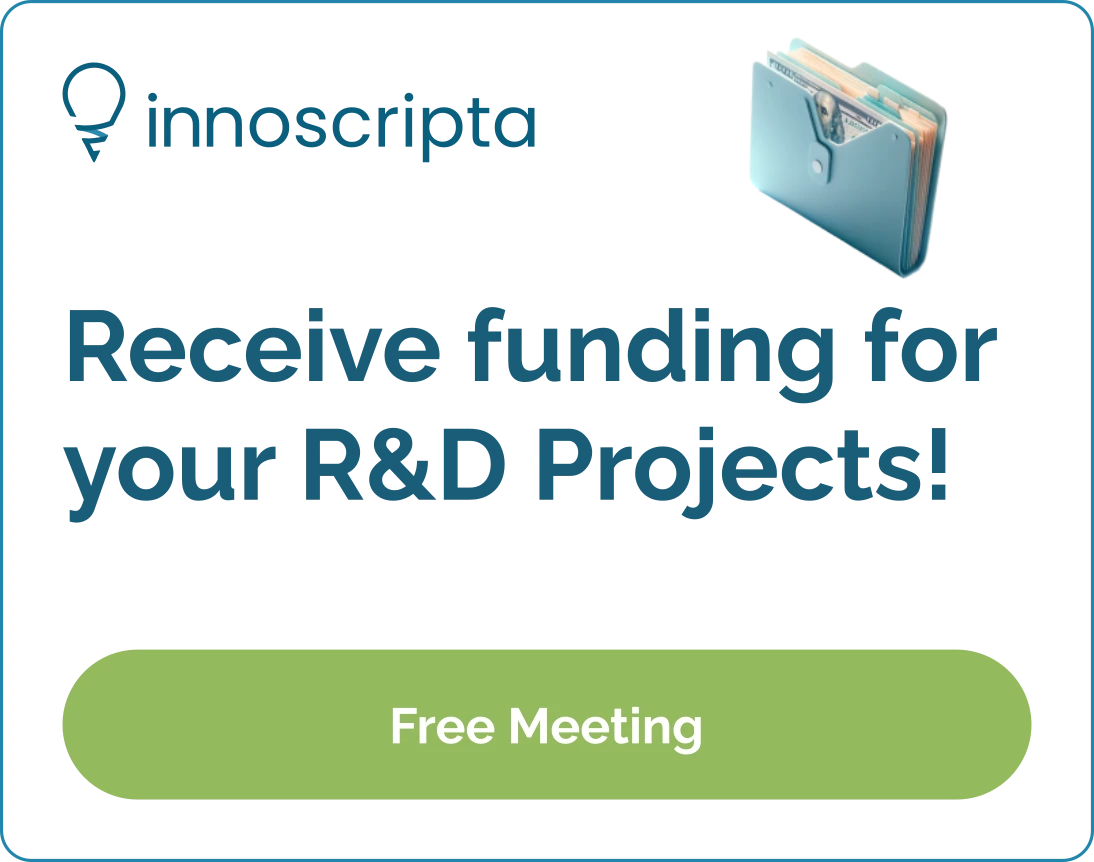
Advancements in Quantum Technology: Frequency Conversion of Photons

Frequency conversion of single photon scattering on a spatio-temporal hologram of molecular vibrations in Hydrogen gas.
Credit: Nicolas Joly / Max Planck Institute for the Science of Light
… frequency conversion of single photons at arbitrary wavelengths.
Quanta of light – photons – form the basis of quantum key distribution in modern cryptographic networks. Before the huge potential of quantum technology is fully realized, however, several challenges remain. A solution to one of these has now been found.
In a paper published in the journal Science, teams led by David Novoa, Nicolas Joly and Philip Russell report a breakthrough in frequency up-conversion of single photons, based on a hollow-core photonic crystal fibre (PCF) filled with hydrogen gas.
First a spatio-temporal hologram of molecular vibrations is created in the gas by stimulated Raman scattering. This hologram is then used for highly efficient, correlation-preserving frequency conversion of single photons.
The system operates at a pressure-tuneable wavelength, making it potentially interesting for quantum communications, where efficient sources of indistinguishable single-photons are unavailable at wavelengths compatible with existing fibre networks.
The approach combines quantum optics, gas-based nonlinear optics, hollow-core PCF, and the physics of molecular vibrations to form an efficient tool that can operate in any spectral band from the ultraviolet to the mid-infrared – an ultra-broad working range inaccessible to existing technologies.
The findings may be used to develop fibre-based tools in technologies such as quantum communications, and quantum-enhanced imaging.
Wissenschaftliche Ansprechpartner:
Nicolas Joly
nicolas.joly@mpl.mpg.de
Originalpublikation:
R. Tyumenev, J. Hammer, N. Y. Joly, P. St. J. Russell, D. Novoa: Tunable and state-preserving frequency conversion of single photons in hydrogen, Science, Vol 376, Issue 6593, pp. 621-624, DOI: 10.1126/science.abn1434, https://www.science.org/doi/abs/10.1126/science.abn1434
Weitere Informationen:
https://mpl.mpg.de/news-events/news-from-the-institute/news-detail/news-detail/n…












